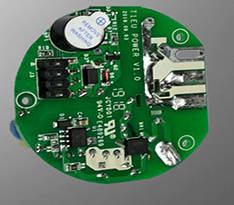1. Inappropriate preheating temperature. Too low temperature will cause poor flux or insufficient temperature due to PCB design, resulting in insufficient tin temperature, worsening of liquid solder's wettability and fluidity, and bridging of solder joints between adjacent circuits;
2. The flux preheating temperature is too high or too low, generally 100~110 degrees. If the preheating is too low, the flux activity is not high. If the preheating is too high, the flux of the incoming tin steel is gone, and it is easy to connect tin;
3. No flux is used or the flux is insufficient or uneven, and the surface tension of the tin in the molten state is not released, resulting in easy connection of tin;

4. Check the temperature of the tin furnace, and control it at about 265 degrees. Use a thermometer to measure the temperature of the peak when the peak hits, because the temperature sensor of the device may be at the bottom of the furnace or other locations. Insufficient preheating temperature will cause the component to fail to reach the temperature. During the soldering process, due to the large amount of heat absorbed by the component, it will lead to poor tin dragging and form continuous tin; it may also be the temperature of the tin furnace is low, or the welding speed is too fast;
5. Improper method when hand dipping tin;
6. Regularly check and do tin composition analysis, it is possible that the content of copper or other metals exceeds the standard, resulting in poor flowability of tin, and it is easy to cause tin connection;
7 The solder is impure, and the impurities in the solder exceed the allowable standard. The characteristics of the solder will change, and the wettability or fluidity will gradually deteriorate. If the antimony content exceeds 1.0%, the arsenic exceeds 0.2%, and the separation exceeds 0.15%, the solder The fluidity will drop by 25%, and the arsenic content below 0.005% will dewet;
8. Check the orbital angle of wave soldering, 7 degrees is fine, it is too flat and easy to hang tin;
9. The PCB board is deformed. This situation will cause the pressure wave depth in the left, middle and right three places of the PCB to be inconsistent, and the tin flow is not smooth in the place where the tin is deep, and bridging is easy to occur.
10. Poor design of IC and power strips, put them together, the IC pin spacing on all sides is <0.4mm, and there is no inclined angle to enter the board;
11. The PCB sinks and deforms during heating, causing continuous tin;
12. PCB board welding angle, theoretically the larger the angle, the smaller the probability that the solder joints will be coplanar when the front and rear solder joints are separated from the wave crest, and the probability of bridging is also smaller. However, the soldering angle is determined by the wettability of the solder itself. Generally speaking, the leaded soldering angle is adjustable between 4° and 9° according to the PCB board design, and the lead-free soldering angle is adjustable between 4° and 6° according to the customer's PCB board design. It should be noted that in the large-angle soldering process, the immersion tin front end of the PCB board will not be enough to eat tin. At this time, it is caused by the PCB circuit board being heated to the center. If such a situation occurs, it should be appropriately reduced Welding angle.
13. There is no solder resist dam between the pads of the circuit board, and they are connected after printing solder paste; or the circuit board itself is designed with a solder resist dam/bridge, but part or all of it is dropped when it is made into a finished product, so it is easy to connect tin